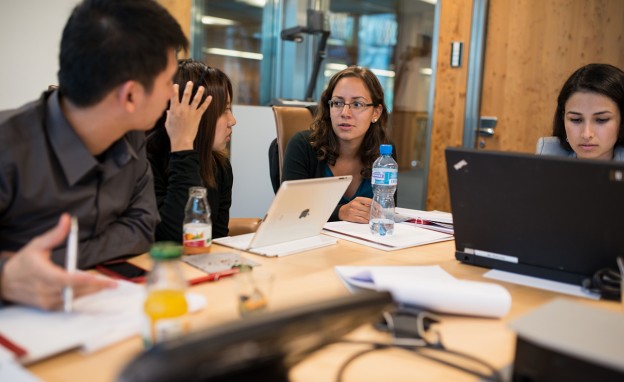18 days, 13 hours, and 36 minutes — that’s how long it took to turn a dream into a reality (or, at least, a realistic business plan).
Ever since I was accepted into the E.W. Scripps School of Journalism at Ohio University, it seems as if every professor I encounter advocates the same idea: “The media industry is in a rut … and it’s up to you to save it!”
This notion scares me to the core. Sure, as a journalism student, I’ve been given the tools to become an informed writer, a critical thinker, and a clear communicator. But how was I supposed to become a media-saving superhero, too?
Joining the challenge
It was late November when I saw an advertisement for the Scripps Innovation Challenge hanging from a cork board in my adviser’s office. When she explained the parameters of the Scripps Innovation Challenge, I realized I simply had to participate in this contest.
The Scripps Innovation Challenge, sponsored by the Scripps College of Communication with funding from the Scripps Howard Foundation, is a nationwide competition that engages students of all disciplines to come together to solve real-world communication problems with comprehensive media solutions.
Six media challenges are presented to participants, and teams spend three months solving just one. This year, some of the challenges included creating an interactive water-quality alert, creating a way to engage high-school students in electoral politics, and creating a product or communication strategy to address sexual assault.
During the two rounds of the competition, teams present deliverables such as a business model canvas, a three-minute pitch video, and, if they’re lucky, a full presentation to industry experts pitching their final product.
My team consisted of six like-minded women of varying disciplines who lived by the same value, which is to always “exceed the expectation.” Thus Team Exceed was born.

Team Exceed on Pitch Day (from left) Rachel Cassidy, Brogan Jackson, Ann Jacob, Erica L. Molfetto, Christine Baker, Shelby Sooy. Photo courtesy of Team Exceed.
In the two weeks proceeding registration, our team selected the challenge that focused on engaging high school students in electoral politics. Because of our diverse team makeup, we were able to conduct field-research in high school classes in Ohio, New York, New Jersey, and North Carolina. When asked how students consumed news, the results overwhelmingly favored “apps” and “listicles.”
This feedback proved crucial, so in the weeks before the first round, we spent hours fleshing out silly ideas on a GoogleDoc like, “Shazam for Politics” and “Political Angry Bird,” until we found the innovative idea that would eventually take hold.
A creative solution for first-time voters
Team Exceed presented a mobile application titled, “He Said//She Said.” We agreed to market our product as “a creative solution for first-time voters.”
In order to engage a high school demographic, we designed our application to be colorful and visual as well as easy to understand. Our research found that political discourse deters young people due to its distant and complex language, so we knew that our product needed to address politics in a way no one else has.
Through a series of interactive features, users would be able to curate a sense of their own political beliefs and where they could go to fulfill their civic duty. The response from high school students was overwhelmingly positive.
In addition, our team calculated the exact amounts of money that our business would need to begin development. While tedious and stressful, it was an eye-opener for our entire team. With those figures in hand, our dream seemed more and more realistic.
On Pitch Day, the last round of the competition, Team Exceed nervously approached the podium and presented our product to three judges. The setup was almost identical to that of Shark Tank or American Idol.
This pitch was a culmination of all the research we’d gathered, all the figures we had calculated, and work we had done–condensed into five minutes and an eight-slide PowerPoint.
What we have learned, however, is worth far more than our $1,000 cash prize or our Honorable Mention. For us, and for the participants of the Challenge as a whole, we have learned how to build a business and sell a pivotal service to consumers in the media age.
For me, the Scripps Innovation Challenge was a lesson in the realm of perspective: while listening to teams pitch their ideas both in meetings and on pitch day, I realized that there are countless ways to solve today’s media problems.
Challenges are solved when individuals contribute their unique perspectives to cultivate a solution that makes the lives of those around us significantly better, or in our case, easier.
The notion of saving the media industry is a little less daunting to me now. If the Scripps Innovation Challenge engages students this passionate, this creative, or this talented, I have no doubt that we can solve current and future media problems.
I am comforted by the idea that no one has to be a media-saving superhero alone.
Erica Molfetto is a junior at the E.W Scripps School of Journalism studying strategic communication and a lover of all things tech. At Ohio University, she serves as the Communications and Marketing Assistant at the College of Fine Arts, as well as Campus Editor for The New Political.com; OHIO’s own online political publication.


